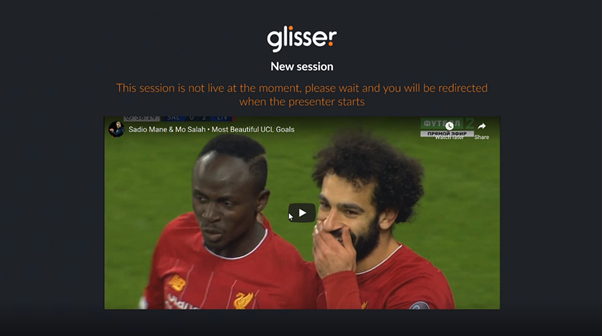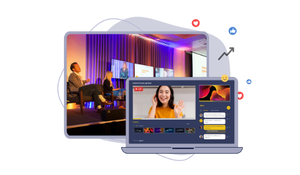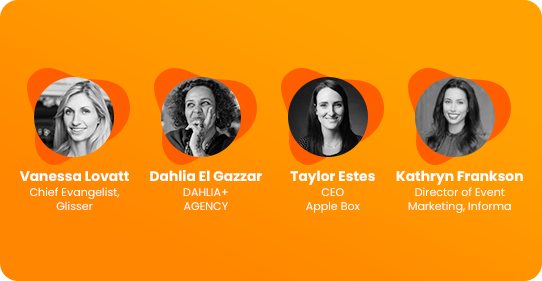Virtual meetings and events have established themselves as having a key role to play in the rebuilt business environment. No longer a band-aid to cover for cancelled in-person activity, they are becoming a business mainstay for many online marketing and communication channels.
As a result, the latter half of 2021 saw a big focus on integrating platforms into existing MarTech and CRM systems, simplifying the data flows and embedding live online communications into the core marketing engine.
As we move further into 2022, the events themselves will become more visible and deeply integrated into a company’s online presence.
A greater number of virtual events will be housed within a company’s own website, rather than hosted on a third-party platform website. While businesses with online shops will be able to host events within the shop itself, providing not just demand generation but also a direct link to purchase.
The combination of a more integrated audience experience and data connectivity into the MarTech stack means that this next generation of virtual events will be truly marketing-owned.
Marketing will control the brand and audience experience; marketing will be in full control of its event portfolio and underlying community of attendees (i.e customers and prospects); and marketing will benefit from the rich data these events are able to generate.
So how can you tailor your events programme for an enriched demand generation marketing strategy?
Firstly, move away from large one-off meetings towards more frequent, smaller events.
The promotional cycle to acquire sufficient attendees has reduced from six weeks with physical events down to two weeks with virtual. Essentially, this gives a small team the scope to triple the volume of events they can offer without having to run multiple events in parallel.
As a consequence, each event can adopt a more targeted theme, bring in a tighter audience and generate leads more aligned with the event content.
It also enables a community of engaged prospects to grow across multiple events - allowing for a ‘softer sell’ based upon nurturing individual relationships.
To learn more about how Marketers and Event Planners can work together to build an effective virtual event demand generation machine, download our eBook.
Secondly, ensure that content is available on-demand and differentiated from competitor events.
One of the advantages of going virtual is the luxury of being able to secure big-name or celebrity speakers that would have been out of the question for a physical event, given appearance fees and travel costs. These speakers, particularly where there is a unique chance to directly interact with them through Q&A or chat, gives your audience a valued and exclusive experience. As a result, promoting their involvement can be a great way to drive registrations.
Capturing your live content and putting a strategy in-place to repurpose it on-demand will see it keep attracting leads and generating opportunities at almost no extra cost and effort to staging the event in the first place.
With this in mind, virtual event planners need to be ensuring content is recorded and prepared for its on-demand role quickly and efficiently as the live event unfolds. Video content should be clipped, potentially shortened, branded and captioned.
The speakers and panels carry much of the burden of content creation, and the event itself captures this in high quality video with relatively little effort (there are no retakes during a live event). When you look at it like this, it’s an almost perfect marketing resource.
Finally, focus on connecting your event data into existing marketing technologies, as well as the richness of this data.
Every user activity - every click, like, question, vote, opinion, connection and video view - can be recorded, combined and analysed to offer new insights.
Ultimately, you’re looking for actions that indicate an individual’s progression down the sales pipeline, and/or suggest a higher propensity to buy. Use this to generate a lead score before layering on other existing data sets for those prospects.
By applying this process across multiple, frequent virtual events and meetings, lead scoring approaches can be iterated quickly.
To summarize then, the future of virtual events will see them better integrated into a company’s broader digital marketing strategy by being embedded into company-owned websites, social or online shops. For effective demand generation, build smaller prospect communities, offer accessible unique content and recognise the potential of the available data and its role within existing CRM and marketing automation suites.
The pace of change around virtual events is fast but it’s an evolution that has transformed them into a highly effective channel, ready to supercharge your marketing efforts.
For more insight into realizing the power of virtual events for demand generation, download our latest eBook.





.png)
-width-700-name-eBook LinkedIn 1200x627 (31).png.png)

.png)
